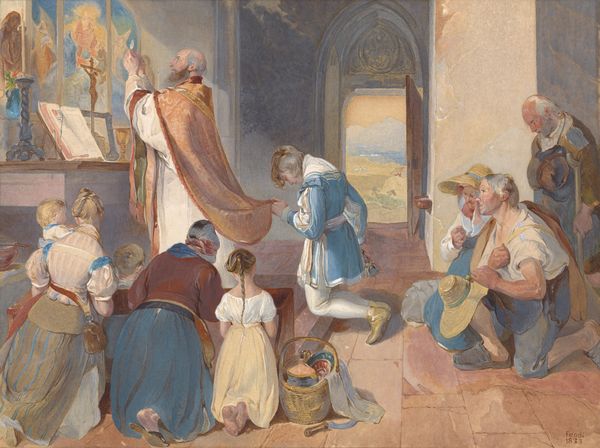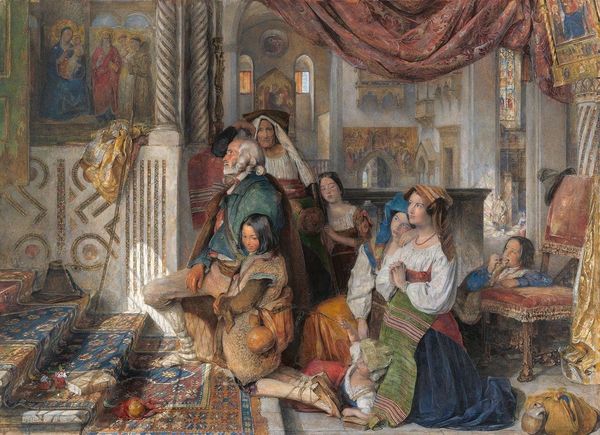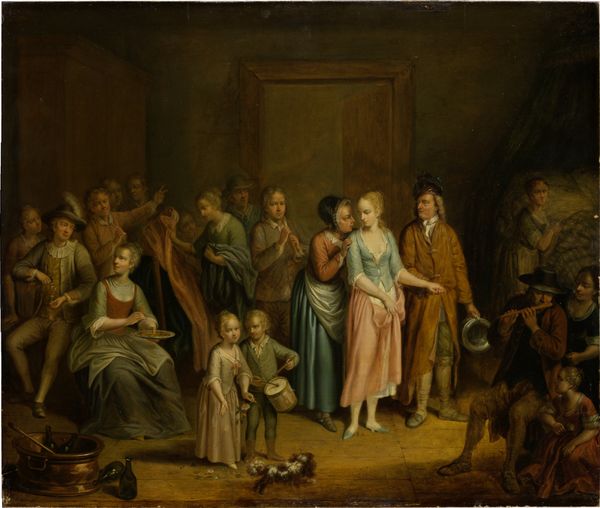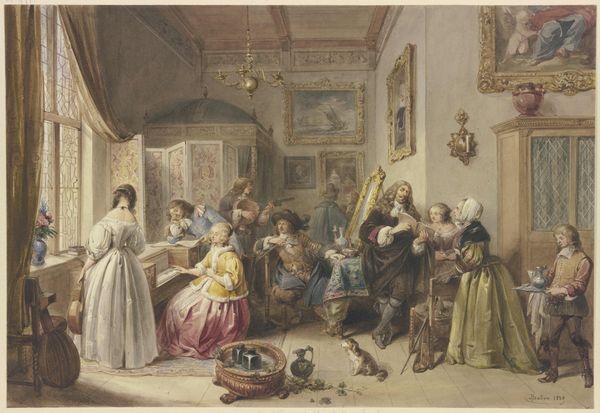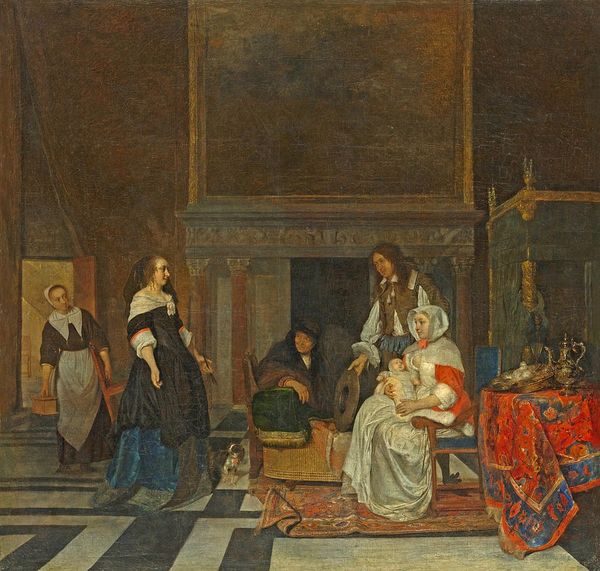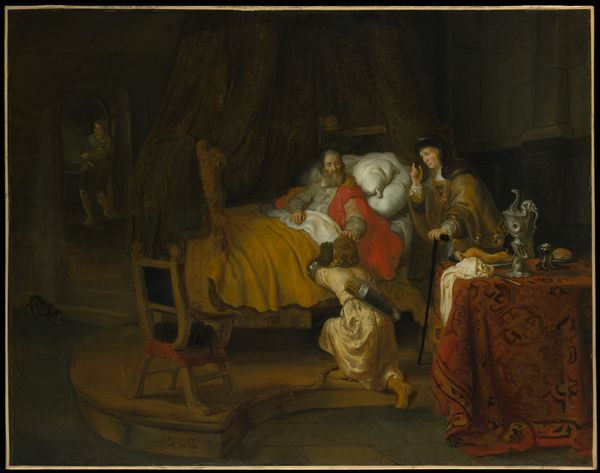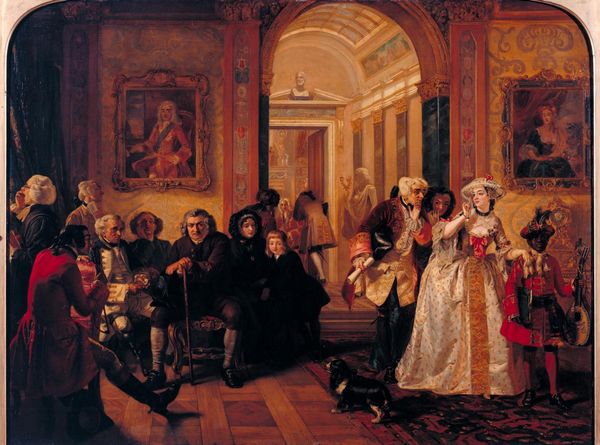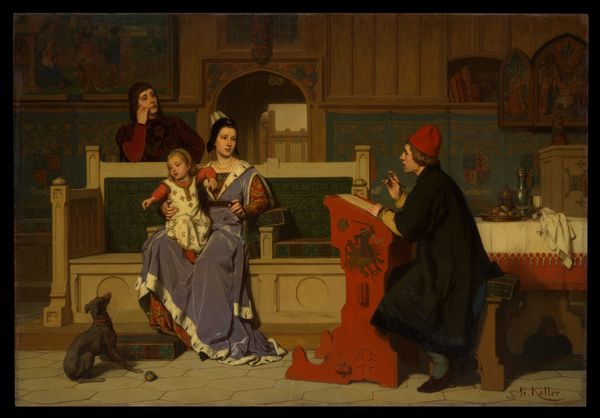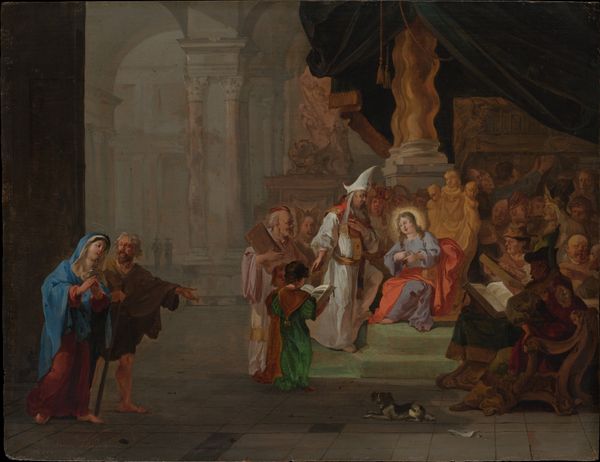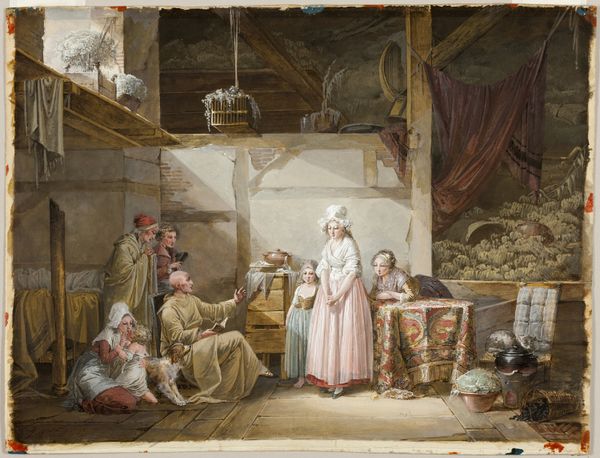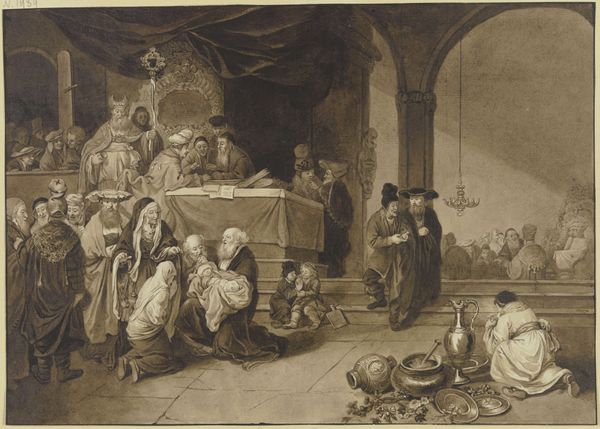
Murillo Painting the Virgin in the Franciscan Convent at Seville 1838
0:00
0:00
drawing, painting, watercolor
#
portrait
#
gouache
#
drawing
#
painting
#
oil painting
#
watercolor
#
romanticism
#
genre-painting
#
history-painting
#
academic-art
#
watercolor
Dimensions: 21 1/2 x 29 3/4 in. (54.61 x 75.57 cm) (sheet)30 1/2 × 38 1/4 × 1 1/2 in. (77.47 × 97.16 × 3.81 cm) (outer frame)
Copyright: Public Domain
Editor: This is "Murillo Painting the Virgin in the Franciscan Convent at Seville," painted by John Frederick Lewis around 1838, now residing here at the Minneapolis Institute of Art. I'm immediately struck by the layered depth, and all those faces gazing toward what seems to be the center of attention. What's your interpretation of this layered scene? Curator: This image speaks volumes about the interplay of artistic legacy and cultural memory. Consider how Lewis positions Murillo, not just as an artist, but as a figure embedded within a specific community. Look at all the gazes directed towards the painting: Do they reflect reverence, critical evaluation, or perhaps even a negotiation of shared values? Editor: It’s like a group portrait within a genre scene! So many figures observing the creative process. I see some religious figures in the back? Curator: Precisely. And observe the Virgin and Child: notice how Lewis depicts them not just as religious icons, but also with a relatable human warmth. He is invoking a very specific symbolic vocabulary rooted in faith, yes, but he’s also creating a scene that invites empathy and connection across time. What emotional responses do these juxtapositions evoke in you? Editor: That human connection makes a lot of sense. It sort of makes me think of my studio critiques... How everyone has different takes. The symbols have this cumulative effect of validating devotion and dedication! It is truly moving! Curator: Yes, dedication is a strong through-line in all these historical interpretations. It is precisely these intersections that reveal how art becomes intertwined with our understanding of history. Thank you. Editor: I now see this as more than a history painting; the work illustrates how communities engage with their cultural icons and shared beliefs. Thanks!
Comments
minneapolisinstituteofart almost 2 years ago
⋮
The British artist John Frederick Lewis painted some of the most sophisticated watercolors ever produced. This elaborate example was executed in Paris during the winter of 1838. A well-traveled artist, Lewis had closely studied the paintings of Bartolomé Estebán Murillo (1617–1682) during a visit to Spain in 1832. However, the curious composition of Murillo Painting the Virgin was almost certainly suggested by Horace Vernet’s Raphael at the Vatican, a work that aroused considerable interest at the 1833 Paris Salon and one Lewis surely examined. He may have intended his own painting as a tribute to the Spanish artist, a challenge to the Frenchman Vernet, or a topical response to the excitement caused in Paris in 1838 when the Galerie Espagnole opened in the Louvre. The representation of old masters at work had a long tradition, and the depiction of a Spanish master would have been timely in 1838.
Join the conversation
Join millions of artists and users on Artera today and experience the ultimate creative platform.

